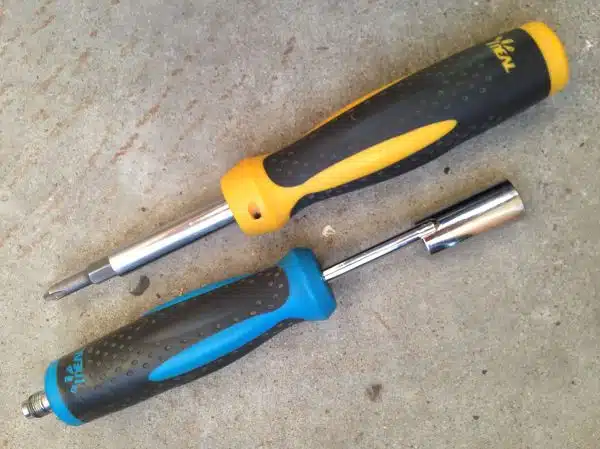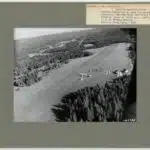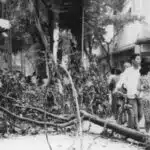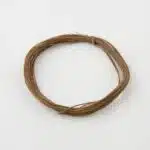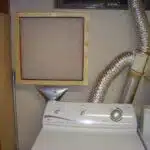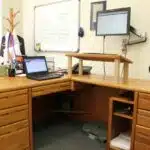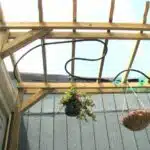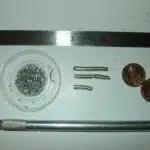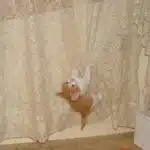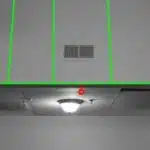As a network technician/installer, one of the most important skills to have is the ability to properly install F connectors on coaxial cable. F connectors are essential for connecting various devices such as televisions, modems, and satellite receivers to cables that transmit signals. Without proper installation, these connectors can cause signal loss or damage to the devices they connect.
In this article, we will discuss the step-by-step process of how to install F connectors on coaxial cable. We will cover the necessary tools needed for the job and provide tips on how to ensure a secure and reliable connection. By following these instructions, you will be able to confidently install F connectors and provide excellent service to your clients.
Understanding F Connectors And Their Importance
It is often said that the devil is in the details, and this is especially true when it comes to cable TV connections. One of the most crucial components in any such connection is the F connector. The importance of F connectors in cable TV cannot be overstated, as they play a vital role in ensuring reliable signal transmission.
Compared to other connector types, F connectors offer several advantages. For one, they are relatively easy to install and usually require only basic tools. Additionally, F connectors have a high level of durability and can easily withstand harsh weather conditions without deteriorating quickly. Finally, these connectors are highly versatile and can be used on a wide range of coaxial cables.
In summary, understanding the importance of F connectors in cable TV is vital for anyone looking to set up or repair a cable TV connection. These connectors offer many advantages over other connector types and provide reliable signal transmission. In the next section, we will discuss how to identify different types of F connectors with ease.
Identifying The Types Of F Connectors
After understanding the importance of F connectors, it is crucial to identify the different types of these connectors. Depending on your project’s need or the type of coaxial cable you are working with, you may encounter either a male or female F connector. Differentiating between these two types is essential to ensure that you pair them correctly with their respective counterparts.
Male F connectors have a pin-like center conductor that extends out from the connector’s body. On the other hand, female F connectors have a threaded outer jacket and a hole in the center for the male connector’s pin to fit into. It is vital to note which type of connector your coaxial cable has before installing an F connector.
Understanding the compatibility of F connectors with various cable types is also crucial. RG-6 and RG-59 are some common types of coaxial cables that work well with F connectors. However, other cable types may require different types of connectors entirely. Ensure that you research which type of connector works best with your specific coaxial cable before beginning installation.
- Four necessary tools for installing F connectors:
- Coaxial Cable Cutter
- Coaxial Cable Stripper
- Crimping Tool
- F Connector Compression Tool
As a network technician/installer, it is essential to equip yourself with knowledge about different types of F connectors’ compatibility with various cable types. Understanding how male and female gendered connections differ will help ensure accurate pairing during installation. Armed with this knowledge and necessary installation tools, you can efficiently install an F connector on any coaxial cable type without encountering any issues along the way.
Necessary Tools For The Job
Wire strippers are necessary for properly preparing coaxial cable for the installation of F connectors. A screwdriver and/or drill may be necessary for securing the F connectors to the cable. A socket wrench and pliers may be required for tightening the F connectors for a secure connection. A tape measure, pencil, level, safety glasses, glue gun, hammer, utility knife, and soldering iron should all be on hand to complete the installation of F connectors on coaxial cable.
Wire Strippers
As a network technician or installer, selecting the appropriate wire strippers is an essential step in preparing coaxial cable for F connectors. The wrong wire stripper can lead to uneven cuts, exposed wires, and difficulty inserting the F connector onto the cable. Therefore, it is crucial to choose wire strippers that are specifically designed for coaxial cables.
Techniques for using wire strippers include finding the right size hole on the tool that matches the diameter of the cable being stripped. Once inserted into the tool, clamp down firmly and rotate around the circumference of the cable until you hear a snap indicating that the cut has been made. Then, gently pull off the outer insulation to reveal the inner core of wires.
It is important to note that different types of coaxial cables may require different techniques for stripping. For example, some cables may have a second layer of insulation that needs to be removed before applying an F connector. By understanding how to use your wire strippers properly and knowing what type of cable you are working with, you can ensure a successful installation process from start to finish.
F Connector
As a network technician or installer, it is essential to have the necessary tools for the job. One of these tools is the F connector, which is used to connect coaxial cables to devices such as modems, routers, and televisions. It is important to ensure that the F connector is compatible with the type of coaxial cable being used. Failure to do so can result in poor signal quality and connectivity issues.
When installing an F connector, it is crucial to follow proper techniques and troubleshooting tips. First, ensure that the cable has been properly stripped using appropriate wire strippers. Then, insert the stripped end of the cable into the F connector until it reaches the stop point. Finally, crimp or compress the F connector onto the cable using a compression tool or pliers.
If you encounter any issues during installation, there are several potential troubleshooting steps you can take. These include checking for loose connections, ensuring that all components are securely fastened in place, and verifying that all cables are properly routed and connected. By following these guidelines and utilizing proper tools such as F connectors, network technicians can ensure successful installations with optimal signal quality and connectivity.
Preparing The Coaxial Cable For Installation
Imagine you are preparing to embark on a journey. You must pack your bags carefully and ensure that everything is in order before setting off. The same can be said for installing f connectors on coaxial cable. Before beginning the installation process, it’s important to prepare the coaxial cable properly. This includes measuring the cable length and stripping it correctly.
Accurate measuring techniques are crucial when it comes to installing f connectors on coaxial cable. To ensure that the connector fits properly, you will need to measure the length of the cable and cut it accordingly. Use a tape measure or ruler to get an accurate measurement of the length of your cable. Remember to add a little extra length to allow for any errors in cutting or crimping.
Once you have measured the cable, it’s time to strip it using appropriate cable stripping methods. Begin by removing about an inch of outer insulation from one end of the cable using a wire stripper or razor blade. Be careful not to damage the inner insulation or shield while doing so. Next, twist and pull back the braid until it’s completely separated from the center conductor. Finally, remove about 1/4 inch of insulation from the center conductor using wire cutters or strippers.
| Pros | Cons |
|---|---|
| Provides clear signal quality | Can be difficult for beginners |
| Easy to install with proper tools | Requires precise measurements |
| Compatible with most devices | Connector may become loose over time |
| Durable design for long-term use | May require frequent maintenance |
| Affordable option for cabling needs | May need specialized equipment |
Preparing your coaxial cable in this manner will ensure that your installation is successful and provides optimal signal quality without any disruptions. Now that we have measured and stripped our coaxial cable, we can move on to the next step: installing f connectors onto our newly prepared cables without damaging them in any way during this process.
Stripping The Coaxial Cable
Before installing an F connector on a coaxial cable, it is important to strip the outer layer of the cable. This process is crucial in order to expose the inner conductor and insulator, which are necessary for proper signal transmission. There are various coaxial cable stripping techniques that can be employed, but it is important to select the right stripping tool based on the diameter of the cable being used.
One common method for stripping a coaxial cable involves using a specialized stripping tool. The tool will have two blades: one blade will cut through the outer layer of the cable while the other blade will cut through the inner insulation. It is important to use these tools with care as they can easily damage or nick the inner conductor during stripping. Another option for stripping a coaxial cable is to use a sharp knife or scissors, although this requires more precision and experience.
Regardless of which technique you choose, it is important to measure twice and cut once when preparing your coaxial cable for an F connector installation. Properly stripped cables should have about 1/4 inch (6mm) of exposed copper conductor visible at both ends. Once your coaxial cable has been stripped properly, you can then move forward with attaching an F connector using crimping pliers or compression tools. Understanding how to effectively strip coaxial cables ensures a better overall installation experience and helps guarantee optimal system performance.
With your coaxial cable properly stripped, it’s time to measure the length needed for connector placement.
Measuring The Cable For Connector Placement
After stripping the coaxial cable, it is time to measure and position the cable for connector placement. This step is crucial to ensure measuring accuracy and proper cable positioning for optimal signal transmission. In this section, we will discuss how to measure the coaxial cable and prepare it for connector installation.
First, measure the length of the cable you need by using a tape measure or ruler. Make sure to add a few inches to your measurement just in case you make an error during installation. After measuring the length, locate the center point of your cable by folding it in half. Use a marker or pen to mark this spot as it will be your guide when installing the connector.
Second, slide on any necessary fittings such as crimp rings or other adapters onto the end of your cable before attaching the connector. This will save you time and effort later on during installation. Once all fittings are in place, push the connector onto the end of the cable until it sits snugly against the fitting.
Lastly, check that you have properly positioned and secured your connectors at both ends of your coaxial cable before testing your connection. This will ensure that you get optimal signal transmission without any interruptions or loss of quality. With these steps, you are now ready to install f connectors on coaxial cables quickly and effortlessly.
Transition: Now that we have covered preparing our connectors for installation let us move on to how we can install them securely onto our cables without damaging them.
Preparing The Connector For Installation
To properly install an F connector onto coaxial cable, it is important to prepare the connector before installation. The first step in this process is using a cable cutter to cut the coaxial cable to the desired length. It’s essential to ensure that the cut is straight and clean, which will prevent any signal loss or interference.
Once the cable has been cut, the next step is stripping the coaxial cable. Using a wire stripper, remove about 1/4 inch of insulation from the end of the coaxial cable. This will expose the inner conductor and outer shield, which are necessary for installing the F connector onto the coaxial cable.
The final step in preparing the connector for installation is installing the F connector onto the coaxial cable. To do this, slide the connector onto the exposed end of the coaxial cable until it reaches its base. Ensure that all wires are lined up correctly and tightly screwed into place. This will create a secure connection between your device and your television provider’s network.
Moving forward with inserting your prepared cable into your F-connector requires precise attention to detail.
Inserting The Cable Into The Connector
After preparing the connector, the next step is to insert the coaxial cable into it. It is crucial to ensure proper cable insertion to avoid any issues with the signal. To do this, follow these steps:
- Strip about 1/4 inch of insulation from the cable end.
- Slide the crimp ring onto the cable.
- Insert the center conductor into the pin of the connector and push it through until it protrudes from the other end.
If you encounter any issues during cable insertion, check for possible causes such as incorrect stripping or a damaged cable. If there are no apparent issues, try using a different connector or cable to determine which component is causing the problem.
Proper cable insertion is essential in ensuring optimal signal quality and avoiding connection issues. After inserting the cable into the connector, proceed to crimping it onto place to complete installation.
Crimping The Connector Onto The Cable
Crimping the Connector onto the Cable
After preparing the coaxial cable, it is time to crimp the connector onto it. Crimping is a technique that requires a special tool called a crimping tool. The crimping tool compresses the connector onto the cable, creating a secure and permanent connection.
There are different crimping techniques, but the most common one involves these steps:
- Insert the stripped end of the coaxial cable into the connector until it reaches the center conductor.
- Use the crimping tool to compress the connector onto the cable.
- Make sure that all parts of the connector are compressed properly.
Troubleshooting tips:
- If you cannot insert or push down the cable into the connector easily, check if there is any obstruction or damage to either component.
- If you find that you have squeezed too hard on your crimping tool and damaged either your cable or your connector, do not panic; simply cut off both ends and start over again.
In summary, crimping connectors onto coaxial cables requires precision and attention to detail. By following proper crimping techniques and troubleshooting tips, network technicians/installers can ensure that their connections are secure and reliable.
Next up: Checking for proper connection…
Checking For Proper Connection
Testing for signal loss can be done by using a signal level meter to measure the strength of the signal transmitted through the coaxial cable. To ensure a secure connection, it is important to check that the F connectors used are properly secured and not loose. Additionally, the F connectors should be crimped onto the cable using a compression tool to ensure a secure connection. Once the F connectors are attached to the cable, use a continuity tester to confirm that the connection is properly made.
Testing For Signal Loss
As a network technician or installer, one of the most important steps in installing F connectors on coaxial cable is checking for proper connection. This includes testing for signal loss, which can greatly affect performance and quality. Signal loss occurs due to cable attenuation, or the reduction of signal strength as it travels through the cable.
To test for signal loss, a signal amplifier can be used to boost the signal and measure any losses along the cable. The amplifier sends a known signal through the cable and measures how much is lost at various points. If significant losses are found, adjustments can be made to improve the connection or replace any damaged cables.
It’s important to note that even small amounts of signal loss can have a big impact on performance, so it’s essential to thoroughly test for it during installation. By taking these steps to ensure proper connection and minimal signal loss, network technicians and installers can provide reliable and high-quality services to their customers.
Ensuring A Secure Connection
As a network technician or installer, ensuring a secure connection is crucial in maintaining reliable and high-quality services for customers. One of the biggest challenges in installing F connectors on coaxial cable is avoiding signal loss, which can greatly affect performance and quality. Hence, it’s important to check for proper grounding for f connectors before proceeding with the installation process.
Tips for avoiding cable signal loss include using high-quality cables that are appropriate for the intended use and length, avoiding sharp bends or kinks in the cable, and ensuring that there are no damaged areas or loose connections. It’s also essential to use proper tools when installing F connectors to ensure they are securely attached to the cable without any gaps or excess material. Any small errors during installation could result in significant signal losses, affecting overall network performance.
Proper grounding is equally important as it helps prevent electrical interference from disrupting the signal. A properly grounded system will provide a stable reference point for electrical signals and minimize electromagnetic interference that can cause unwanted noise and distortion. Therefore, network technicians/installers should ensure that all components of the system are adequately grounded to eliminate any potential issues before testing for signal loss.
Installing A Compression F Connector
After ensuring that the coaxial cable is properly connected, it’s time to move on to installing the f connector. One option for installation is a compression f connector, which provides a secure and reliable connection. Compression connectors require special tools to ensure proper installation, but they offer superior performance compared to twist-on connectors.
When installing a compression f connector, it’s important to avoid common mistakes such as using the wrong size connector or failing to properly strip the cable. Using the wrong size connector can result in a weak connection that may not provide adequate signal strength. Failing to strip the cable properly can also lead to poor performance or even complete signal loss.
To ensure a successful installation of a compression f connector, follow these three tips:
- Use an appropriate compression tool for your specific type of connector
- Strip the coaxial cable carefully and precisely according to manufacturer guidelines
- Verify that your connections are tight and secure before finishing the job
By avoiding common mistakes and following these tips, you can achieve optimal performance from your coaxial cable system with a compression f connector.
Next, we’ll discuss how to install a twist-on f connector as another option for connecting coaxial cables.
Installing A Twist-On F Connector
To install a twist-on F connector, start by preparing the coaxial cable. Strip off about 1 inch of the outer jacket using a cable stripper tool. Be careful not to damage the shield underneath the jacket. Once stripped, fold back the shielding to expose about ¼ inch of the center conductor.
Next, insert the prepared coaxial cable into the twist-on F connector. Ensure that the center conductor goes all the way into the connector’s pin and that the shield is properly in place around it. Twist on the connector clockwise until it is snugly secured onto the cable.
Twist-on connectors are an excellent alternative to crimp or compression connectors because they require no special tools or skills to install. However, if you encounter issues with your twist-on connector installation, there may be several reasons for this including incorrect stripping lengths or improperly placed shielding. Troubleshooting these common installation issues can help ensure that your twist-on F connectors work correctly and provide reliable signal transmission.
Troubleshooting Common Installation Issues
Even with the best installation practices, it is possible to experience issues with your cable signal. Troubleshooting these issues can save time and money in the long run. One common issue is a weak or nonexistent signal. If you are experiencing this problem, there are a few things you can try before calling a professional. First, make sure all connections are tight and secure. Loose connections can cause interference and weaken the signal. Additionally, check for any damaged cables or connectors that may need to be replaced.
Another issue that may arise during installation is testing cable continuity. This process ensures that there are no breaks or interruptions in the cable connection from end to end. To test cable continuity, use a multimeter set to the continuity setting and touch one probe to one end of the cable and the other probe to the opposite end of the cable. If there is no beep or reading on the multimeter, there may be a break in the connection that needs to be repaired.
If troubleshooting doesn’t solve your cable signal issues, it may be time to call in a professional for assistance. A network technician/installer will have specialized tools and knowledge to diagnose and repair more complex issues with your system. By addressing any issues early on, you can avoid costly repairs down the line and enjoy uninterrupted service.
Moving forward into best practices for f connector installation, it’s important to note that proper installation can prevent many of these troubleshooting issues from occurring in the first place.
Best Practices For F Connector Installation
Installing F connectors on coaxial cables is an essential task that every technician or installer must know how to do. Doing it correctly ensures that the signal transmission through the cable is optimal, and it minimizes the chances of having connectivity issues. However, many technicians make common mistakes when installing F connectors, such as not stripping enough insulation or over-tightening the connector. Therefore, it is crucial to follow best practices to ensure a proper installation.
One tip for installing F connectors is to use the right tools. A compression tool specifically designed for F connectors will make the process easier and ensure a tight connection. It is also essential to strip the insulation properly without damaging the core wire. Another critical factor is ensuring that you have purchased high-quality connectors from reputable manufacturers.
Despite following best practices, troubleshooting connectivity issues may still arise. One common issue could be a poor connection between the F connector and the coaxial cable, leading to signal loss or distortion. To fix this problem, check if there are any visible damages on both ends of the cable and connector, then re-terminate the connector if necessary.
In conclusion, installing F connectors on coaxial cables is a vital task that requires attention to detail and adherence to best practices. By using high-quality materials and tools and avoiding common mistakes during installation, technicians can ensure optimal connectivity performance. In case of any issues arising with connectivity after installation, troubleshooting techniques such as checking for visible damages and re-terminating can help restore optimal signal transmission.
Conclusion And Next Steps
In summary, learning to install F connectors on coaxial cable is an essential skill for any network technician or installer. It ensures that the connections are secure and stable, preventing signal loss and interference. However, it’s important to note that the quality of the cable used can also affect the performance of the connection. Using high-quality cables ensures that there is minimal attenuation, leading to better overall transmission.
As technology continues to advance, so too do connector technologies. There are already newer connectors such as compression connectors that offer a more secure and reliable connection than traditional crimp-style F connectors. As a network technician or installer, staying up-to-date with these advancements in connector technology is crucial in ensuring that your installations remain competitive in terms of performance and reliability.
In conclusion, mastering the art of installing F connectors on coaxial cable is just one aspect of being a successful network technician or installer. Keeping up with technological advancements and ensuring high-quality cables are used also play a crucial role in delivering top-notch service to customers. By following best practices and staying current with industry trends, you can guarantee customer satisfaction and build a solid reputation as a dependable professional in your field.
Conclusion
F connectors are an essential component for connecting coaxial cables to devices such as TVs, satellite receivers, and cable modems. A proper installation of F connectors ensures a reliable signal transmission and avoids interference issues. In this article, we have discussed the different types of F connectors and the necessary tools required for their installation. We have also provided detailed instructions on preparing the coaxial cable and stripping it before installing a twist-on F connector.
As a network technician/installer, it is vital to understand the importance of properly installing F connectors. These small but powerful components can make all the difference in ensuring a seamless connection between devices. Identifying the types of F connectors and using the right tools for the job is crucial to avoid any installation issues or signal disruptions.
In conclusion, mastering how to install F connectors on coaxial cables is an essential skill for any network technician/installer. By following our step-by-step guide and troubleshooting common installation issues, you will be able to provide your clients with a reliable and uninterrupted signal transmission. So go ahead, roll up your sleeves, grab your toolbox, and get ready to create some impressive imagery in your client’s minds with your expert installation skills!
Image Credits
- “File:Ideal multibit screwdriver and F connector tool.jpg” by J.C. Fields (Talk) (Uploads) (featured)

